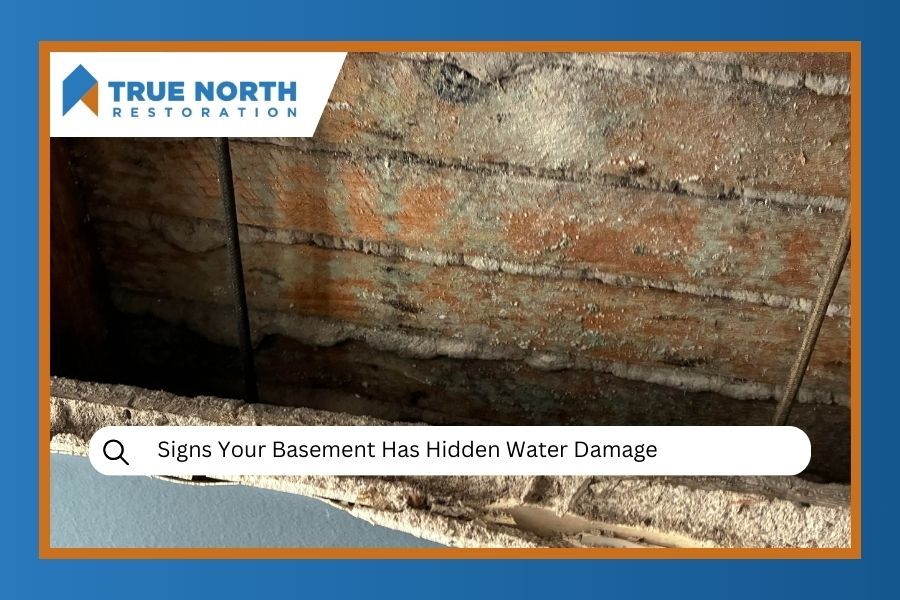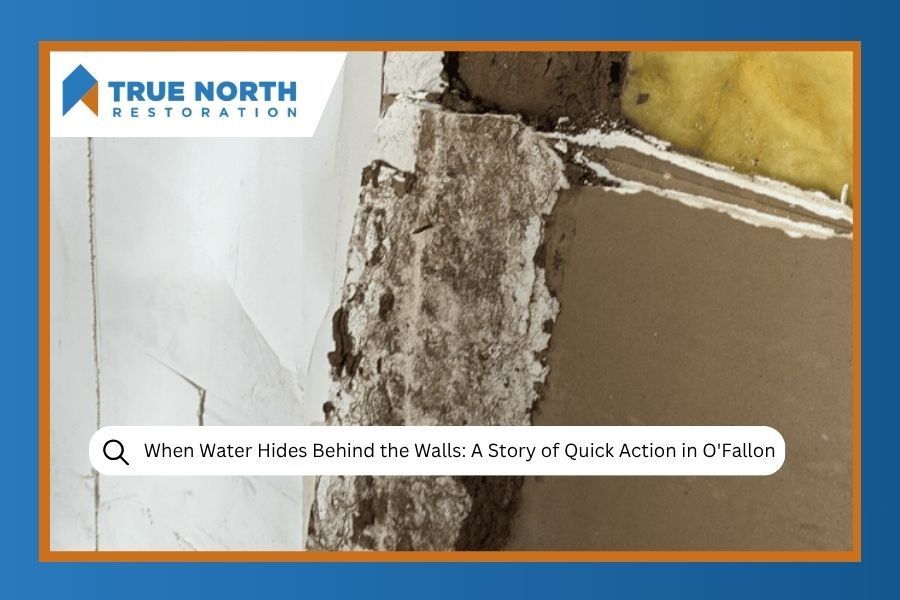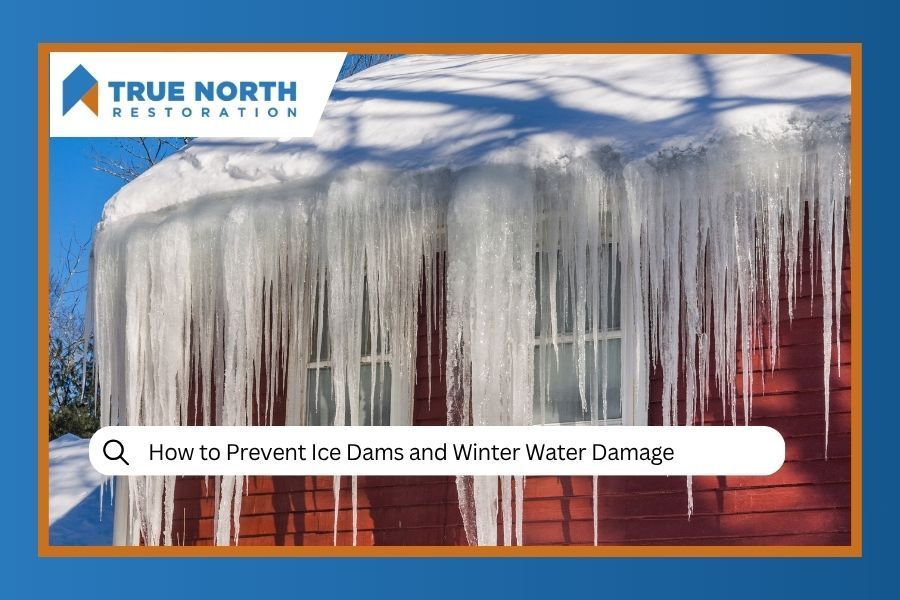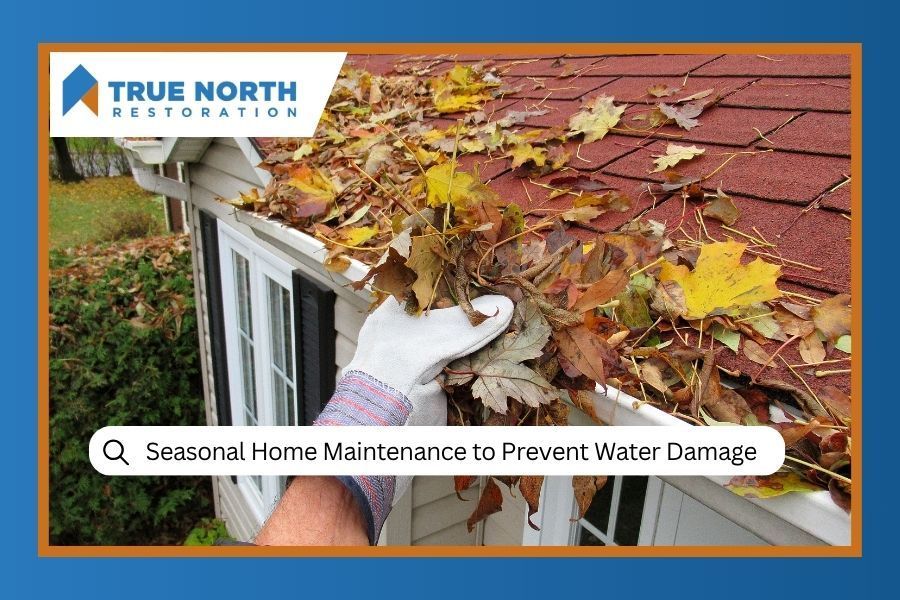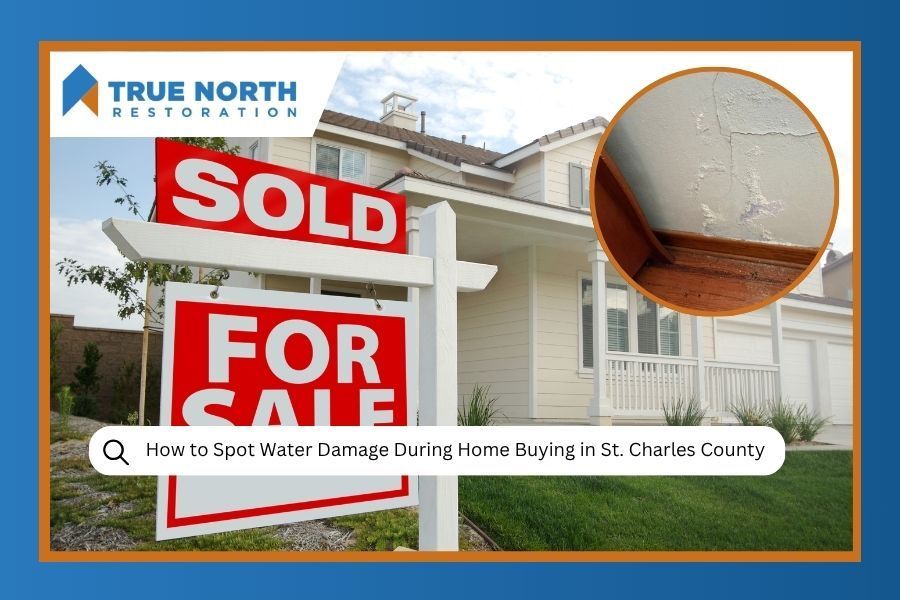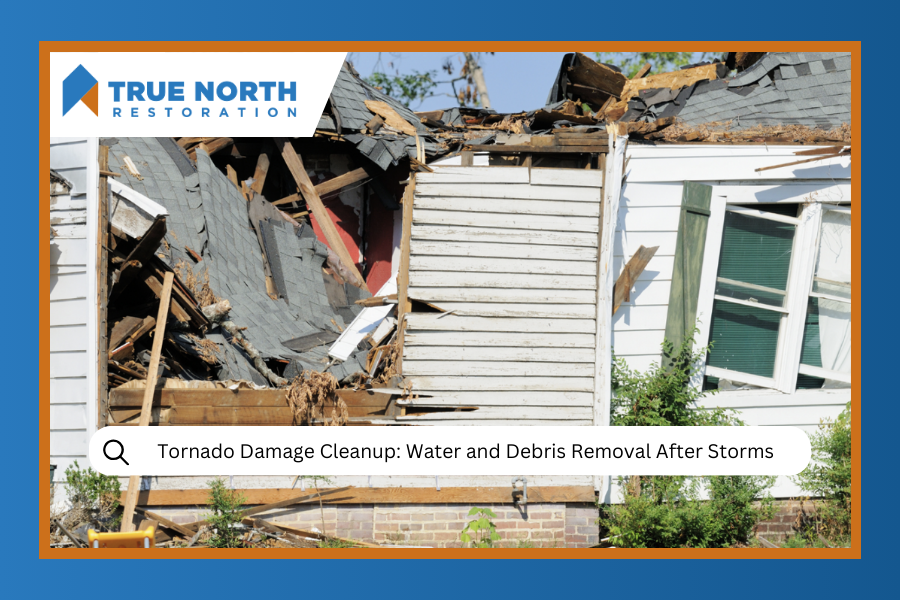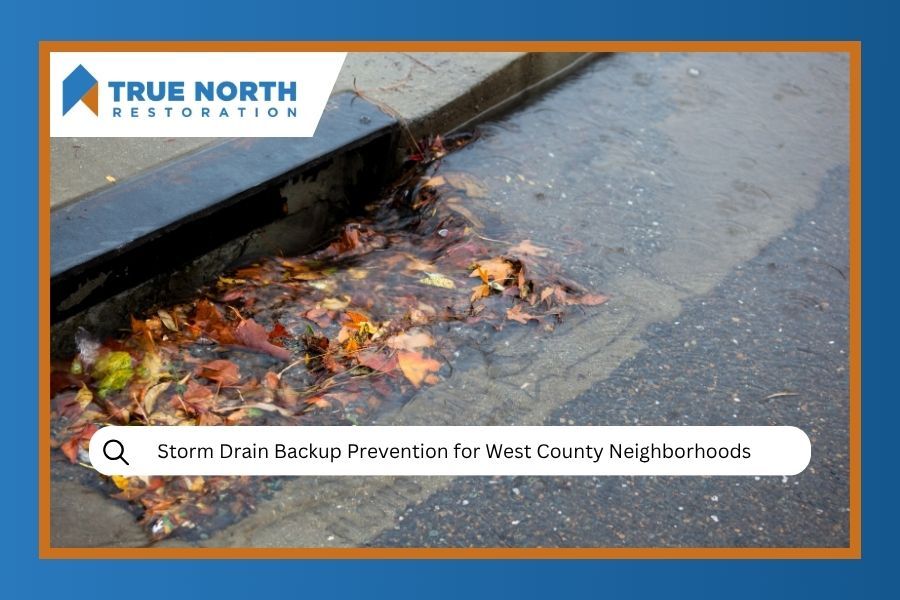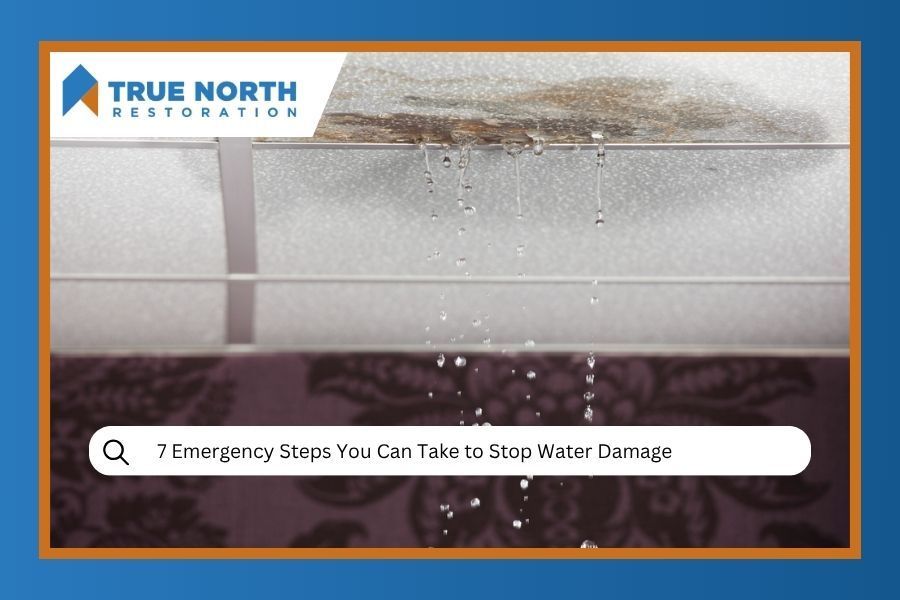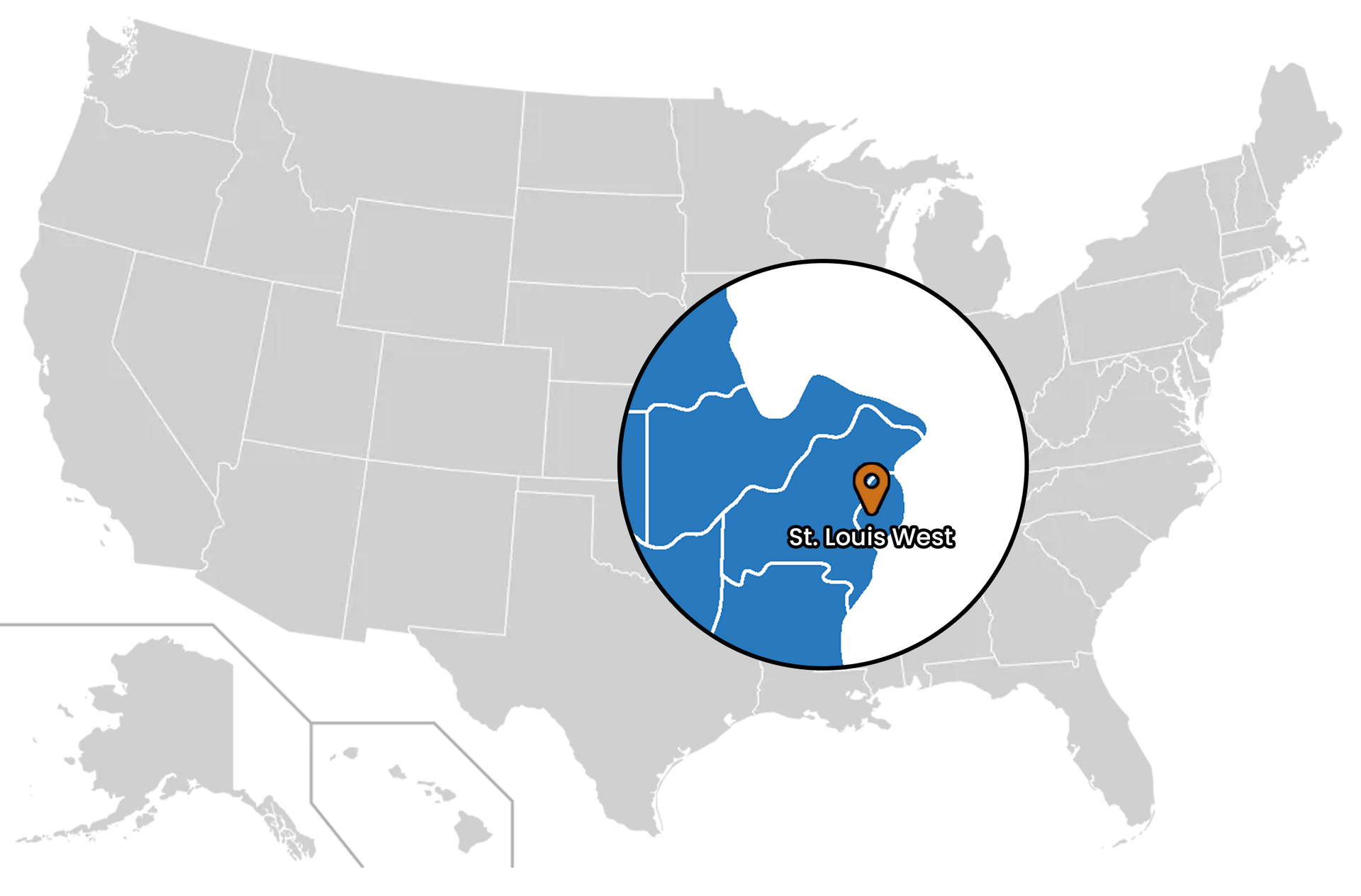Jump to Section:
Your basement can fool you. What looks like a perfectly dry, safe space might actually be hiding water damage that could cost thousands to fix later. We've seen it countless times here in St. Charles County and West County, homeowners discover "hidden" damage that's been quietly wreaking havoc for months, sometimes years.
The thing is, basements are sneaky. They're underground, often dark, and let's be honest, not the part of your house you spend a lot of time admiring. But ignoring your basement is like ignoring your car's check engine light, it might seem fine now, but you're asking for trouble down the road.
Our IICRC-certified team at True North Restoration of Greater St. Louis West has helped hundreds of homeowners tackle basement water damage restoration throughout the area, and trust us, early detection is everything. Here's what to look for.
Why Basements Hide Water Damage So Well
Before we dive into the warning signs, let's talk about why basements are such perfect hiding spots for water damage. In our area, most homes have basements, which puts them right in the path of Missouri's heavy spring rains, winter freezes, and those unpredictable storm systems that love to roll through.
Basements sit below ground level, making them natural collection points for water. Add in poor ventilation, limited natural light, and the fact that most people use them for storage rather than daily living, and you've got the perfect recipe for hidden damage.
How Quickly Hidden Water Damage Develops
Water intrusion begins, materials start absorbing moisture
Mold spores begin to grow, musty odors may start
Visible mold growth, materials begin to deteriorate
Structural damage begins, expensive repairs needed
The 7 Hidden Signs Your Basement Has Water Damage
1. That "Basement Smell" Getting Stronger
You know the smell. That musty, damp odor that makes you wrinkle your nose every time you head downstairs. If that smell is getting stronger or spreading to other areas of your house, that's a clear sign of water damage and potential mold growth.
What's happening: Moisture and water damage create perfect conditions for mold and mildew, which produce those unmistakable musty odors.
Action step: Don't mask it with air fresheners. The smell will tell you where to look, so follow your nose to find the source.
2. White Powdery Stains (Efflorescence) on Walls or Floor
See white, chalky deposits on your concrete walls or floor? That's efflorescence, and it happens when water moves through concrete and evaporates, leaving mineral deposits behind.
What's happening: This white residue indicates water is seeping through your foundation, even if you can't see actual wet spots.
Why it matters: While efflorescence isn't harmful by itself, it shows water is getting into your basement, which can lead to bigger problems like cracks or mold.
🚨 Emergency Water Damage Response
Ready to stop water damage before it spreads?
Call True North Restoration at (314) 557-3990 for a 45-minute emergency response in St. Charles County and West County. We're available 24/7.
Call Now: (314) 557-39903. Mysterious Rust Stains and Corrosion
Metal fixtures like support beams, pipes, and HVAC systems develop rust when exposed to moisture over time. If you're seeing rust where it wasn't before, you've got a moisture problem.
Check these spots:
- Support beams and posts
- Metal pipes and fittings
- Furnace and water heater areas
- Window frames and door hardware
The danger: Rust doesn't just appear overnight. It signals long-term moisture exposure that could be compromising your home's structural integrity.
4. Foundation Cracks That Keep Getting Bigger
Small hairline cracks in concrete foundations are normal, but cracks that are growing or allowing water to seep through are serious warning signs. In our area, the limestone and dolomite bedrock creates unique challenges for foundations.
What to watch for:
- Horizontal cracks (more serious than vertical ones)
- Cracks with water stains around them
- Multiple cracks appearing in the same area
- Cracks you can fit a coin into
5. Soft or Squishy Drywall and Trim
Press gently on your basement walls. Do they feel soft, spongy, or give way under pressure? Softened drywall indicates water damage on the inside, even if the exterior appears normal.
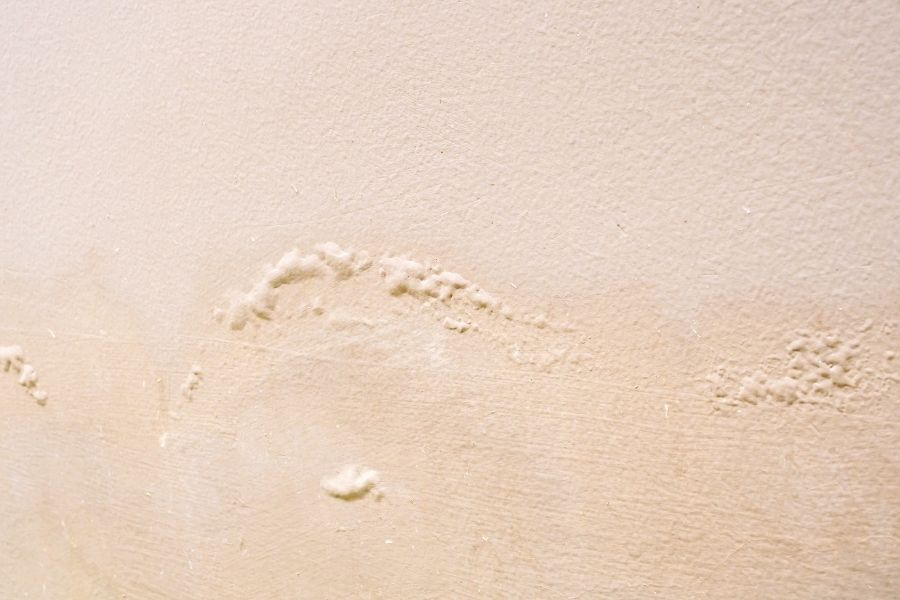
Soft, bubbling drywall is a clear sign of hidden water damage that requires immediate professional attention.
Test areas:
- Around windows and doors
- Near water pipes and fixtures
- Corners where walls meet floors
- Areas with visible staining
6. Your Storage Items Are Mysteriously Damaged
Cardboard boxes that crumble, photos that stick together, or stored items with water damage can indicate basement moisture issues. If multiple stored items show damage without an obvious cause, your basement's humidity levels are too high.
Common signs:
- Cardboard that falls apart when moved
- Books with warped pages
- Metal items developing rust
- Fabric items feeling damp or moldy
7. Uninvited Guests (Bugs and Pests)
Certain insects and pests are attracted to moisture, including termites, carpenter ants, silverfish, and cockroaches. An uptick in basement pest activity often signals water problems.
Moisture-loving pests to watch for:
- Termites and carpenter ants
- Silverfish and cockroaches
- Crickets and spiders
- Centipedes and millipedes
The Basement Water Damage Detection Checklist
Use this seasonal checklist to catch problems early:
Spring Check (After Heavy Rains)
- Inspect walls and floors for new stains
- Check for standing water or damp spots
- Test sump pump operation
- Look for new cracks or expanded existing ones
- Sniff test for stronger musty odors
Summer Check (High Humidity Season)
- Monitor humidity levels (should be below 50%)
- Check for condensation on pipes and walls
- Inspect stored items for damage
- Look for pest activity increases
Fall Check (Pre-Winter Prep)
- Clear gutters and downspouts
- Seal any identified cracks
- Check basement windows and wells
- Inspect exterior grading around foundation
Winter Check (Freeze-Thaw Cycles)
- Monitor for frozen pipe signs
- Check for ice dam formation
- Watch for new cracks from freeze-thaw cycles
- Ensure proper basement heating
Why Missouri Weather Makes Basement Issues Worse
Living in St. Charles County and West County means dealing with some challenging weather patterns. Missouri sees significant snowfall that, when it melts, can create serious flooding issues in basements. Add our clay-heavy soils that expand and contract with moisture changes, and you've got a recipe for foundation stress.
Local factors that increase risk:
- Heavy spring rains and storm systems
- Winter freeze-thaw cycles that crack foundations
- Clay soils that shift with moisture changes
- Limestone bedrock with natural drainage channels
For a deeper dive into weather-related issues, check out our guide on common causes of water damage in your home.
What To Do When You Find Hidden Water Damage
Found some of these warning signs? Don't panic, but don't ignore them either. Here's your action plan:
- Document everything- Take photos for insurance purposes
- Stop the source- If you can identify where water is coming from, address it immediately
- Remove standing water- Use pumps, wet vacuums, or buckets
- Start drying- Run dehumidifiers and fans, but avoid disturbing potential mold
- Call professionals- For anything beyond minor dampness, get expert help
How Much Does Basement Water Damage Really Cost?
Ignoring hidden water damage isn't just risky, it's expensive. Homeowners can end up paying more than $12,000 for damage caused by winter storms and water intrusion. Early detection and professional remediation typically cost a fraction of major reconstruction work.
| Intervention Level | Typical Cost Range | What's Included |
|---|---|---|
| Early intervention | $500-2,500 | Professional drying and mold prevention |
| Major remediation | $5,000-15,000+ | Structural repairs and reconstruction |
| Full basement rebuild | $15,000-50,000+ | Complete reconstruction depending on size and scope |
Prevention: Your Best Defense Against Hidden Damage
The best way to handle hidden water damage? Don't let it hide in the first place. Our water damage prevention guide has complete details, but here are the basement-specific basics:
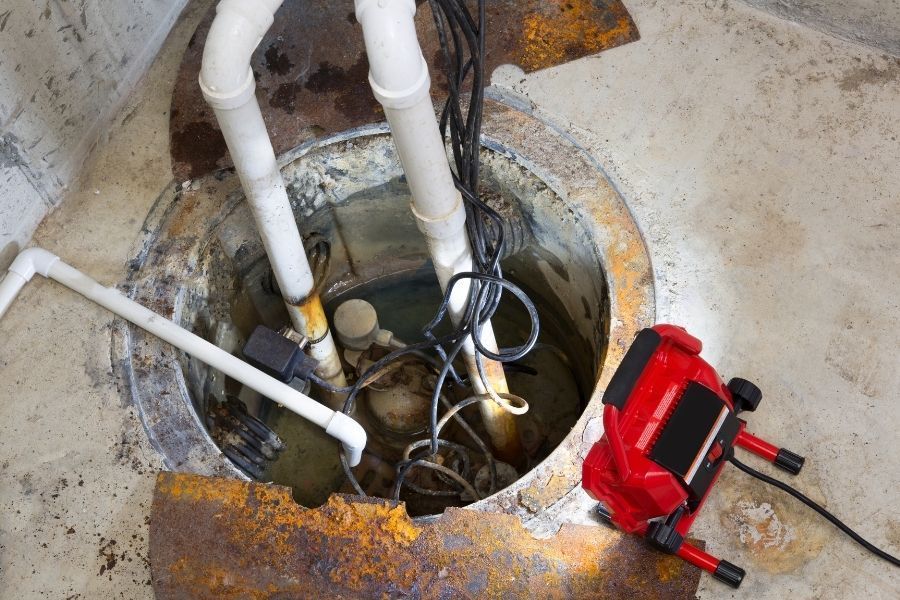
A quality sump pump with battery backup is essential for basement flood protection in St. Charles County homes.
Essential prevention steps:
- Install a quality sump pump with battery backup
- Maintain proper grading around your foundation
- Keep gutters and downspouts clean and properly directed
- Seal foundation cracks promptly
- Monitor basement humidity levels
- Schedule annual professional inspections
For homeowners who want to see exactly what water damage looks like in different scenarios, we've put together a visual guide with real examples.
Our certified professionals serve homeowners throughout Chesterfield, St. Charles County , and surrounding West County areas, providing fast, reliable restoration services.
When to Call True North Restoration of Greater St. Louis West
Some basement moisture issues you can handle yourself, others require professional expertise. Call us immediately if you notice:
- Standing water that returns after removal
- Visible mold growth (black, green, or fuzzy patches)
- Strong musty odors that don't improve with cleaning
- Structural damage like sagging floors or large cracks
- Health symptoms (allergies, respiratory issues) that improve when you leave the basement
Our team responds within 45 minutes throughout St. Charles County and West County, and we handle everything from initial assessment to complete restoration. Plus, we work directly with your insurance company to minimize your hassles.
Get Professional Water Damage HelpReal Stories: Hidden Damage We've Uncovered
We recently helped a homeowner in Maryland Heights who discovered extensive mold damage that had spread from their kitchen into the basement. What started as a "small" leak behind their sink had created thousands of dollars in hidden damage.
Another client in New Haven, MO, called us for moisture cleanup after noticing bubbling paint and musty smells. Our inspection revealed failed window seals and foundation issues they never would have found on their own.
The common thread? Early detection saved these homeowners tens of thousands in reconstruction costs.
Getting Professional Help in St. Charles County
At True North Restoration of Greater St. Louis West, we've made basement water damage our specialty because we know how common and costly it can be in our area. Our IICRC-certified professionals use advanced moisture detection equipment, professional-grade drying systems, and proven remediation techniques.
What sets us apart:
- 24/7 emergency response with 45-minute arrival time
- IICRC certifications in water, mold, and fire restoration
- Direct insurance claims handling
- Family-owned, women-owned business with local expertise
- Comprehensive services from detection to full restoration
When your world heads south, go True North. We're here to help restore what matters most, your home and your peace of mind.
Contact True North Restoration of Greater St. Louis West:
- Phone:(314) 557-3990 (24/7 emergency line)
- Service Area: Chesterfield, St. Charles County, and West County communities
- Website: stlouiswest.gotruenorth.com
Ready for a professional inspection? Contact us here to schedule your basement assessment.
Frequently Asked Questions
How can I tell if basement moisture is normal or a problem?
Some basement dampness is normal, especially in humid weather, but persistent moisture, visible water stains, musty odors, or humidity levels above 50% indicate a problem that needs attention. Trust your nose - if the smell is getting stronger or spreading upstairs, you need professional help.
Is white powder on basement walls dangerous?
The white powdery substance (efflorescence) itself isn't dangerous, but it signals that water is moving through your foundation. While not immediately harmful, it indicates conditions that can lead to more serious water damage and mold growth if left untreated.
How quickly can hidden water damage become a major problem?
Mold can start growing within 24-48 hours of water exposure, but hidden damage often develops over months or years. The key is that once it becomes visible (stains, odors, structural damage), the problem has usually been developing for much longer than you realize.
Should I buy a moisture meter to check my basement myself?
A basic moisture meter can help you monitor problem areas, but professional-grade equipment provides much more accurate readings. Our IICRC-certified technicians use specialized tools that detect moisture in areas you might miss and can distinguish between surface dampness and serious water intrusion.



